-

Ford Focus RS through the ages
© FordFord has confirmed there won’t be a new Focus RS version of its charismatic hot hatch. Sadly, the cost of developing a hybrid powertrain (needed for overall fleet emissions compliance) wiped out any potential profit. The able Focus ST will be as hot as it gets.
And even this is set to end in 2025, when Ford stops production of the Focus range for good.
Here, we look back at the history of the Ford Focus RS, revealing how it burst onto the scene and evolved over three generations.
-

Focus RS Mk1 debuts in 2002
© FordIt all began in Europe back in 2002. Ford’s super hatch arrived a year later than planned – but the wait was worth it.
-

A special project
© FordThe original Focus RS was a crack engineering team special. It had a 215-horsepower 2.0-liter turbocharged engine, plus a track-bred Quaife differential to manage power at the front wheels.
-
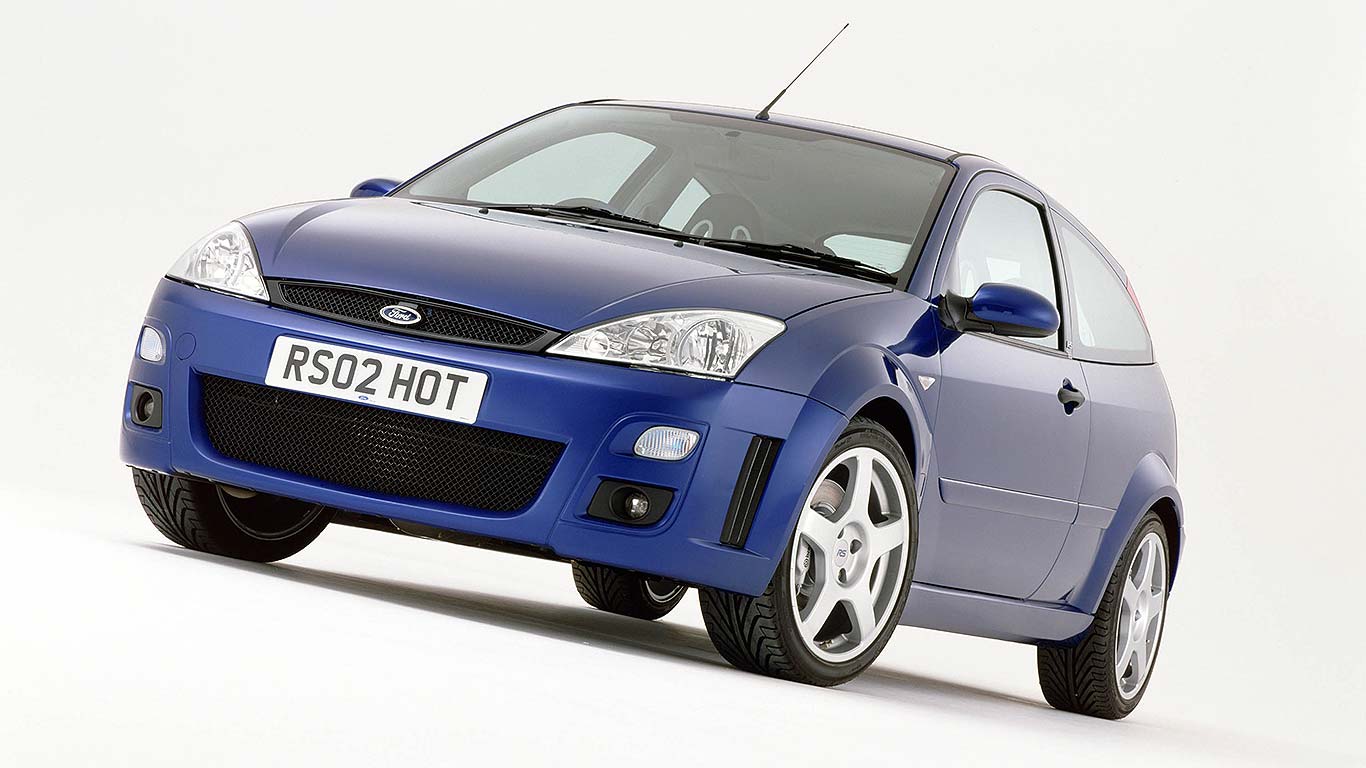
Blue is the color
© FordOffered only in Ford RS Imperial Blue, the hot Focus wore exotic O.Z. Racing wheels wrapped around powerful Brembo brakes. Ford spared little expense when it came to components.
-

A fast Ford
© FordBy modern standards, performance isn’t exceptional. However, it was impressive for its day: 0-62mph took 6.4 seconds and top speed was 144mph.
-

Inside story
© FordInside, the budget wasn’t there for wholesale changes. Even the steering wheel stayed the same, albeit retrimmed. Ford also swapped the temperature gauge for a turbo boost dial.
-
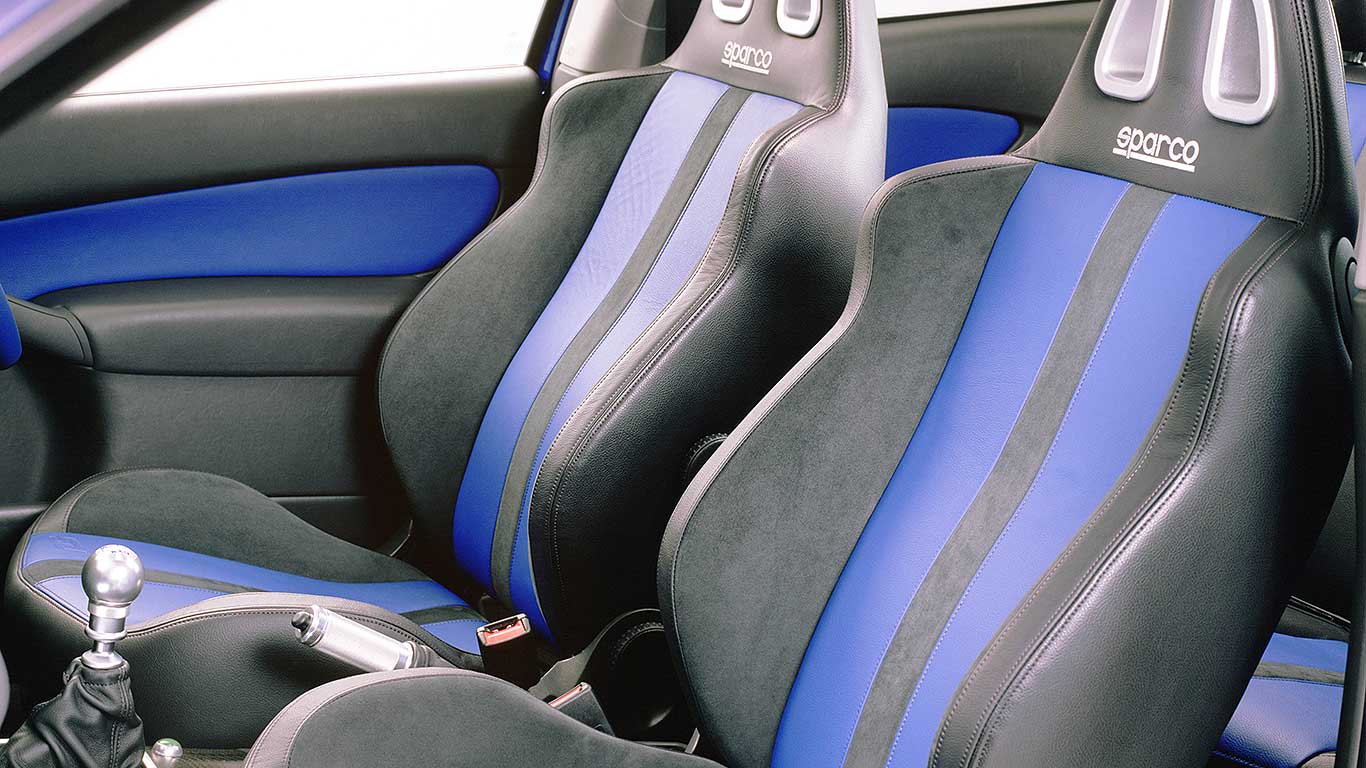
Tangled up in blue
© FordThe interior was decked out in a rather alarming blue color scheme. It’s ‘bold’ if we are being kind, ‘tacky’ if we’re not…
-

Sparco seats
© FordRather more impressive were the Sparco racing seats, which featured cut-outs for race harnesses. Spot the green start button mounted by the bespoke metal gear lever. The gearbox only had five speeds.
-
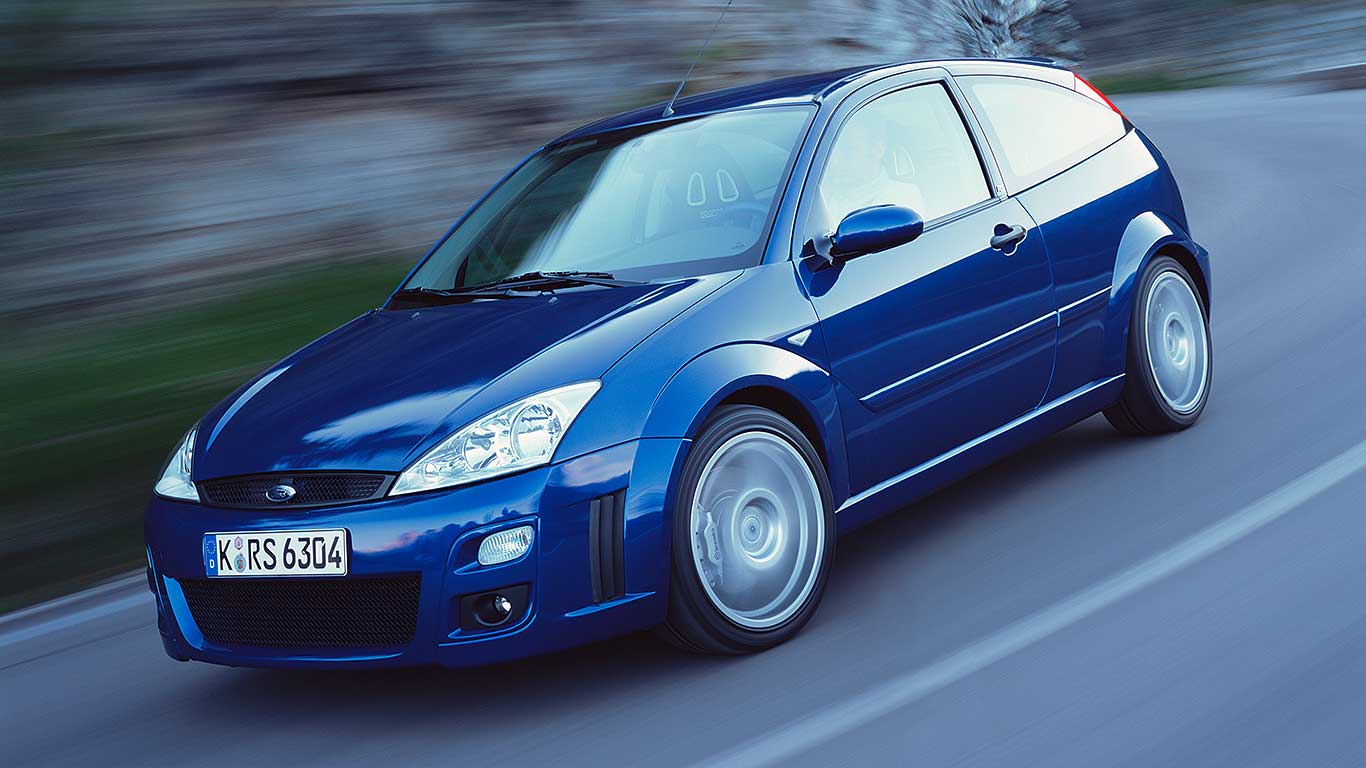
Critical acclaim
© FordThe transformation was dramatic. For some, the Focus RS was simply too unruly and full-on, but we loved it. It offered an intense, livewire buzz like no other front-wheel-drive hot hatch. No wonder it’s now considered a classic – its status helped by Ford building just 4,501 examples.
-

Focus RS Mk2 arrives in 2008
© FordIt was all-change in 2008 with the global launch of the Focus RS Mk2 at the British Motor Show in London. This color might have been similar, but everything else was new.
-

What lies beneath.
© FordThe car’s fully-formed, more aggressive new looks were not just for show – as a peek beneath the vented bonnet revealed.
-

Got five on it
© FordThe 2.5-liter five-cylinder turbocharged engine produced a punchy 300-horsepower. There was no Quaife differential this time; instead, Ford fitted innovative ‘Revoknuckle’ front suspension to manage the conflicting forces.
-

Aero and dynamic
© FordTwo huge tailpipes signalled the Volvo-sourced engine’s arrival. They’re housed in a jutting rear diffuser, beneath a teatray-like rear wing. No, it ain’t subtle.
-
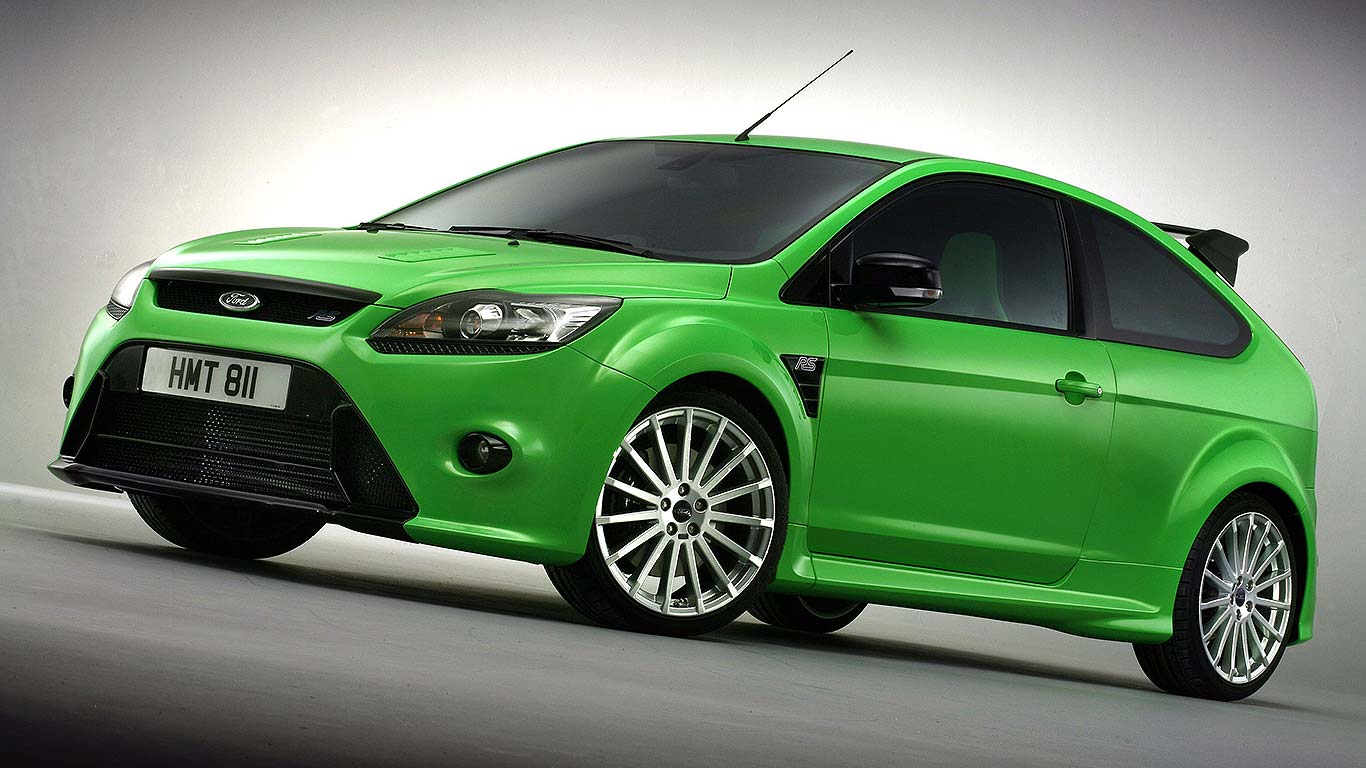
Going green
© FordThe Focus RS was available in colous other than blue – such as this blinding bright green: the British Motor Show launch colour.
-

The ultimate shade
© FordFast Ford fans like to make a statement, and the green paint proved popular. Its official name is Ultimate Green. Seems apt.
-

Celebrity endorsed
© FordTo ensure the Focus RS got noticed, Ford also invited celebrities such as England cricketer Alastair Cook to get behind the wheel.
-
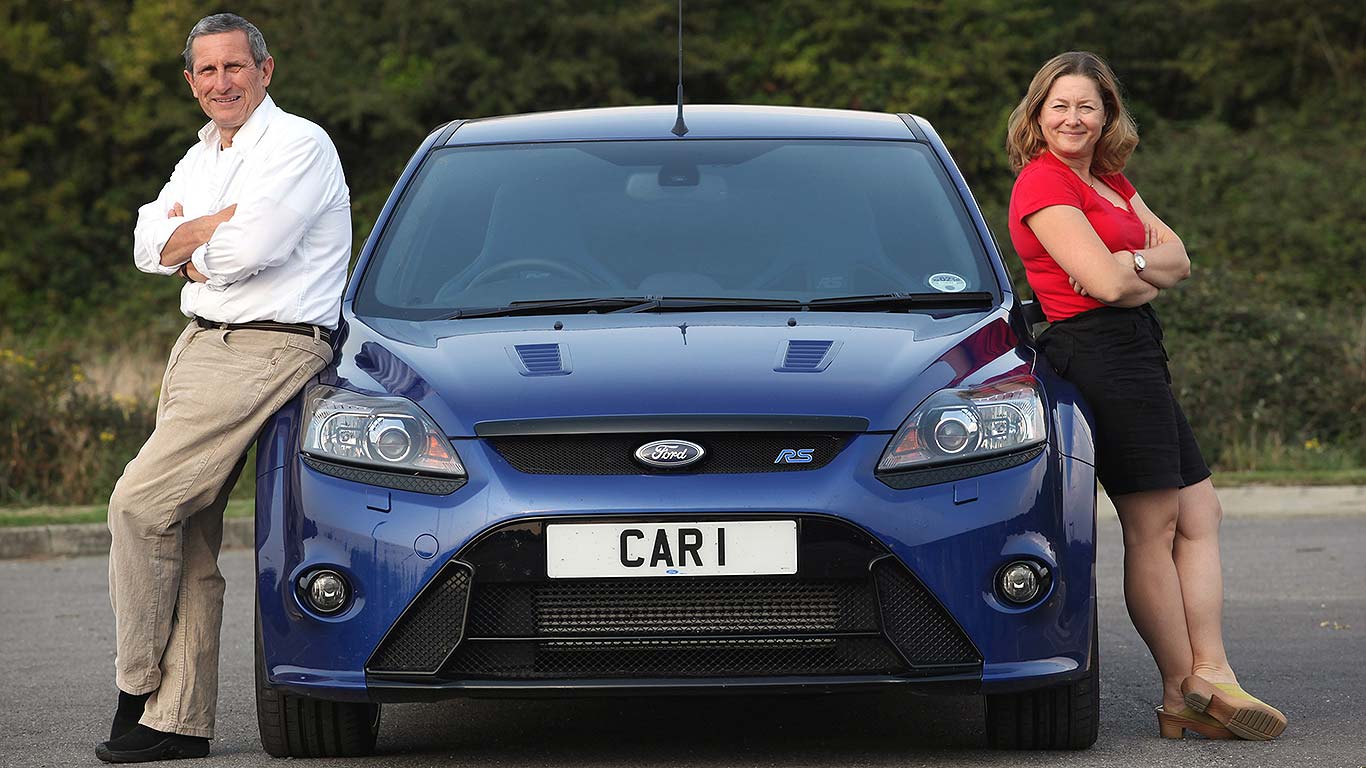
Going green-ish
© FordFocus RS owners soon found it wasn’t the most fuel-efficient car – especially if driven ‘enthusiastically’. That didn’t stop Ford entering England’s annual MPG Marathon event, where the car managed an unlikely 38.5mpg (roughly 32 U.S. mpg).
-

Bye bye, GTI
© FordOthers had different figures in mind. Famed British aftermarket tuner BBR GTI created a 380-horsepower ‘RS380’ that could hit 62mph in 5.6 seconds.
-
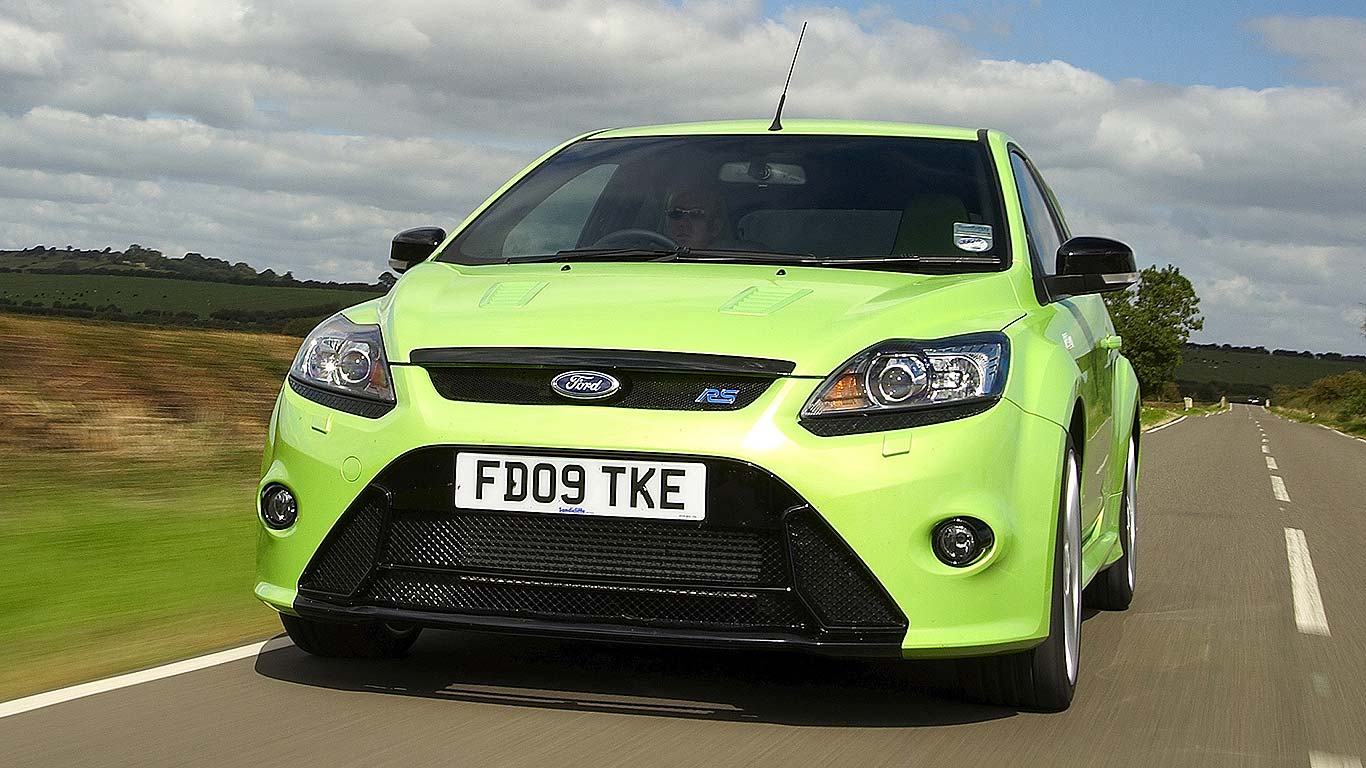
Looking Goode
© FordGraham Goode Racing was at it, too. The tuning company produced an ‘RS370’ conversion with – you guessed it – 370-horsepower.
-

Not so Goode
© FordThe Graham Goode kit cost £4,000 (around $5,400) fitted and actually delivered a similar 0-62mph time. It was limited by traction more than power, said road testers at the time.
-

Official tuning kit
© FordNoting this trend, Ford decided to join the action itself. It recruited semi-official works tuner Mountune to produce a 350-horsepower MP350 kit. You can still buy it for around £2,400 ($3,200) fitted.
-

Focus RS 500
© FordIn 2010, Ford launched a special edition Focus RS 500 with the Mountune kit as standard. As its name suggests, only 500 cars were built (101 for the UK), marking the end of Mk2 production. In total, Ford made more than 11,000 examples of the Mk2 RS.
-

Goodbye to the Focus RS…
© FordNo sooner had the RS 500 landed in showrooms, it was gone. The Mk2 Focus was replaced by the Mk3, and Ford launched a semi-hot ST version – but there was no word on the RS. Would the story end with the three cars pictured above?
-
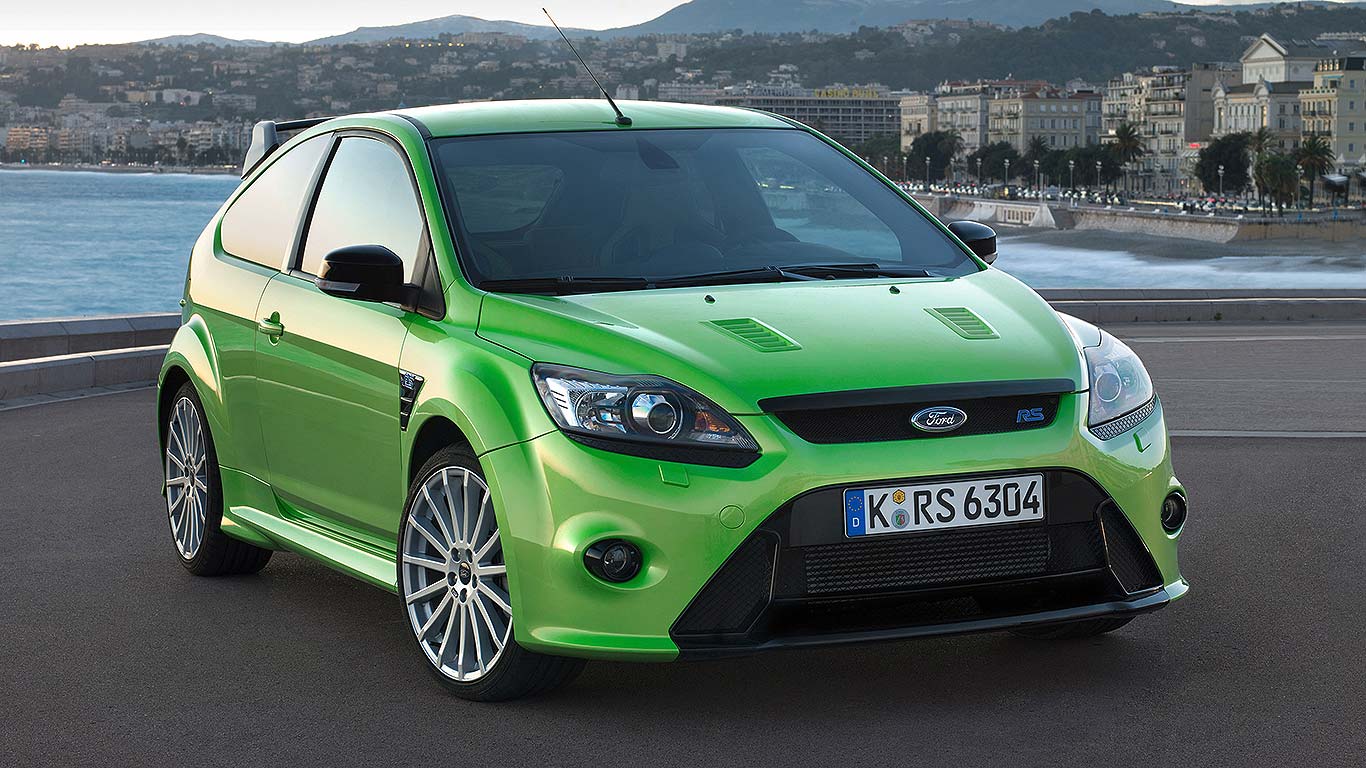
An appreciating asset
© FordFord hesitated for years – but the market was doing its own thing. Namely, prizing the Focus RS immensely. Britain still loved the cars, which perhaps got Ford thinking. Could the world love them too?
-

Focus RS Mk3 confirmed in 2014
© FordIn late 2014, the third-generation Focus RS was confirmed. Enthusiasts around the world breathed a sigh of relief.
-

A little less bespoke
© FordThe Mk3 doesn’t have any bespoke body pressings, unlike earlier models. So it lacks some bulging visual muscle, but – on the plus side – costs were kept down.
-

Performance per pound
© FordThat was how Ford could charge just £29,995 ($40,500) for the new Focus RS at launch. This seemed astonishing for a 350-horsepower super-hatch that blasted to 62mph in 4.9 seconds and onto 165mph. Sensibly, the RS was now four-wheel drive, too.
-
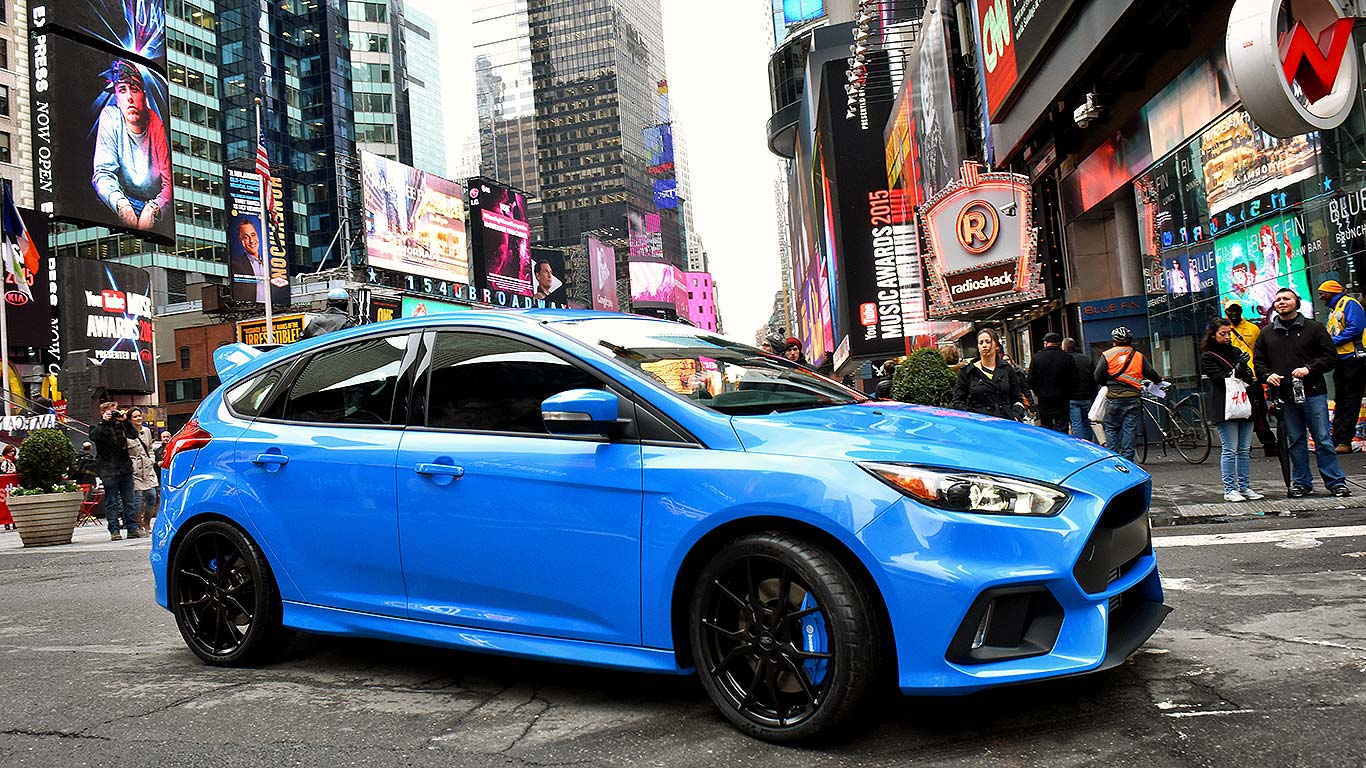
Global RS
© FordThis was the first Focus RS to be sold globally, not just in Europe. Again, this was an important factor in making the car viable and affordable.
-

Ford Performance
© FordFord’s sold the Focus RS under its Ford Performance sub-brand – meaning it was only available at a limited number of specially-trained dealers.
-

Stateside speed
© FordBuyers in the United States officially got the Focus RS for the first time. Note the American-spec amber indicators within the headlights.
-

Mustang motor
© FordThere’s a neat parallel here: the Focus RS actually uses the same 2.3-liter Ecoboost four-cylinder engine as the current Mustang. And that’s an American Ford that came to Europe.
Ford significantly re-engineered the Mustang engine to cope with its extra firepower – and give it a 6,800rpm redline. It may not have five cylinders like the Mk2, but it still growls, pops and bangs like a muscle car.
-

Take a seat
© FordThe Focus RS Mk3 had another fantastic set of Recaro seats, the most sculpted and torso-hugging of the lot.
-

Flat-bottomed wheel
© FordThe interior was similar to the Focus ST, but with RS trimmings including a flat-bottomed steering wheel. No point going too bespoke here, reasoned Ford: it would push up costs unnecessarily.
-

Gauge its reaction
© FordThe extra dashtop dials as seen on the Mk2 Focus RS appear again. They’re finished in traditional RS blue, of course.
-

Brembo brakes
© FordThe Brembo brakes fitted to the Mk3 RS can generate 1.2g of deceleration. They’re housed within 20-inch alloys with Michelin Pilot Super Sport tyres. Semi-slick Pilot Sport Cup 2 rubber was optional.
-
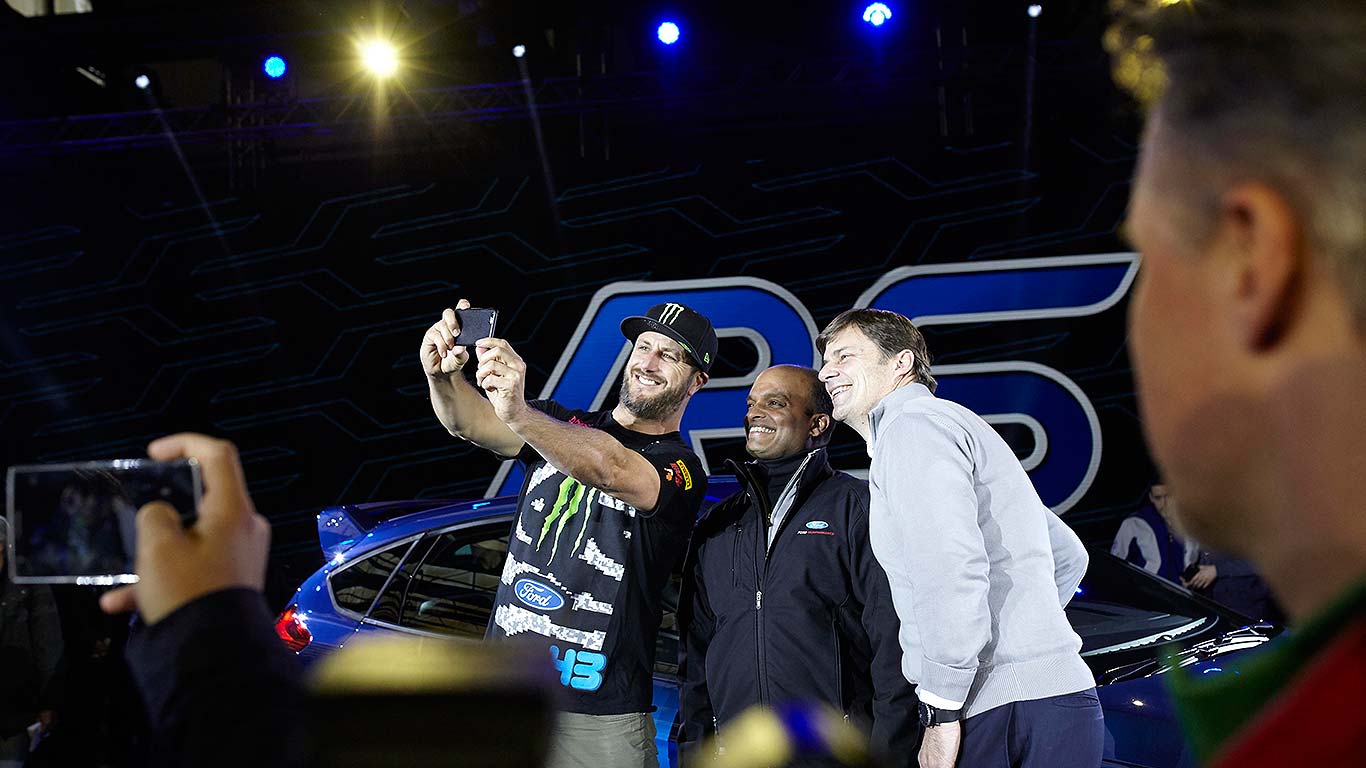
Help from the Hoonigan
© FordFord revealed the Focus RS Mk3 to the world in February 2015, with help from the hoonigan himself: Ken Block. No coincidence, given the Mk3 RS had a special ‘Drift Mode’ for its stability system.
-

Block rockin’
© FordBlock later gave the Focus RS its dynamic debut at the Goodwood Festival of Speed in 2015. Many sets of tyres were destroyed…
-
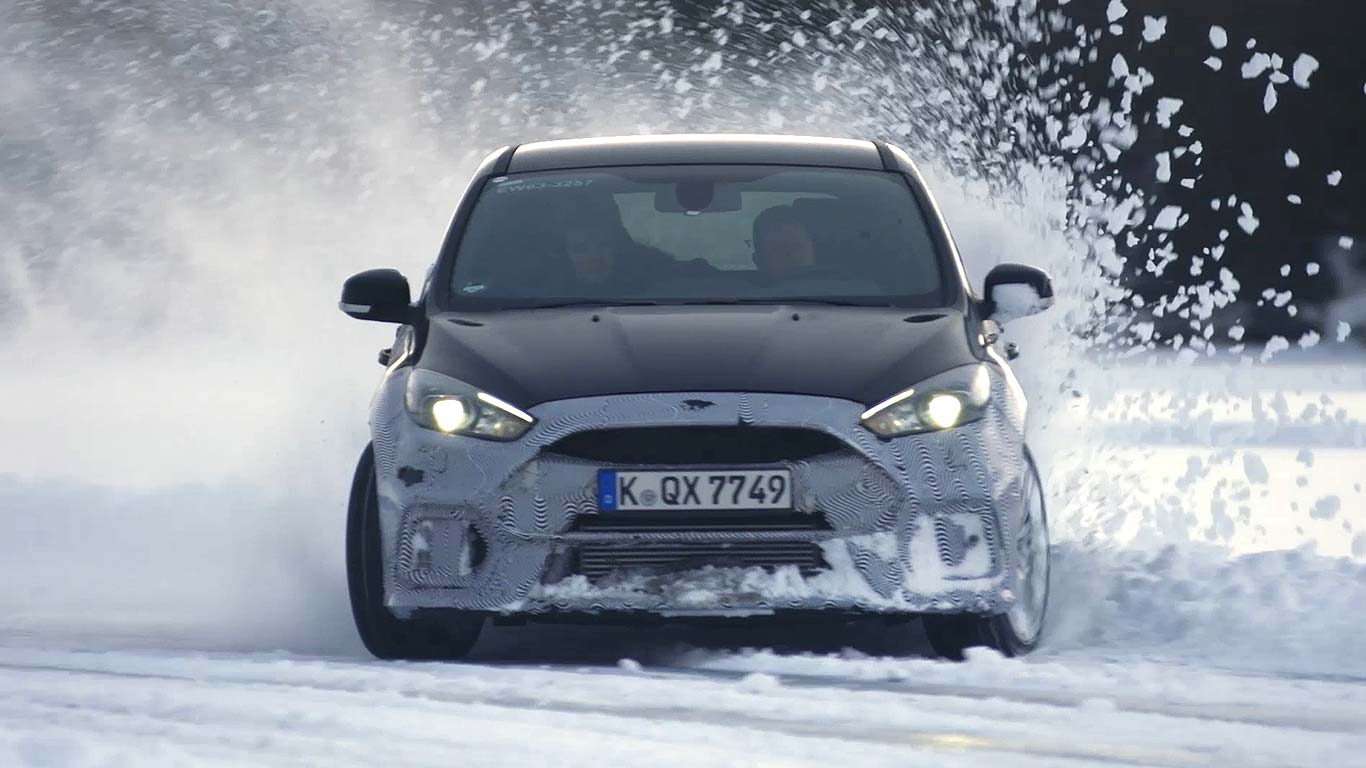
Going sideways
© FordThe mechanical four-wheel-drive system in the Focus RS features dynamic torque vectoring. Up to 70 percent of drive can be sent rearwards, then up to 100 percent can be diverted to an individual wheel. That’s how it’s able to drift so brilliantly.
-

Forza Focus
© FordFord showcased the Focus RS as part of the Forza Motorsport 6 video game launch, too. Top Gear’s Stig had a drive but, for obvious reasons, we don’t know what he thought of it.
-

Simply Red
© FordThere were two Mk3 RS special editions of note. The imaginatively named Red Edition arrived in December 2017, featuring Race Red paint, a contrasting black roof, carbon fiber interior trim and a Quaife mechanical differential. A total of 300 were made.
-
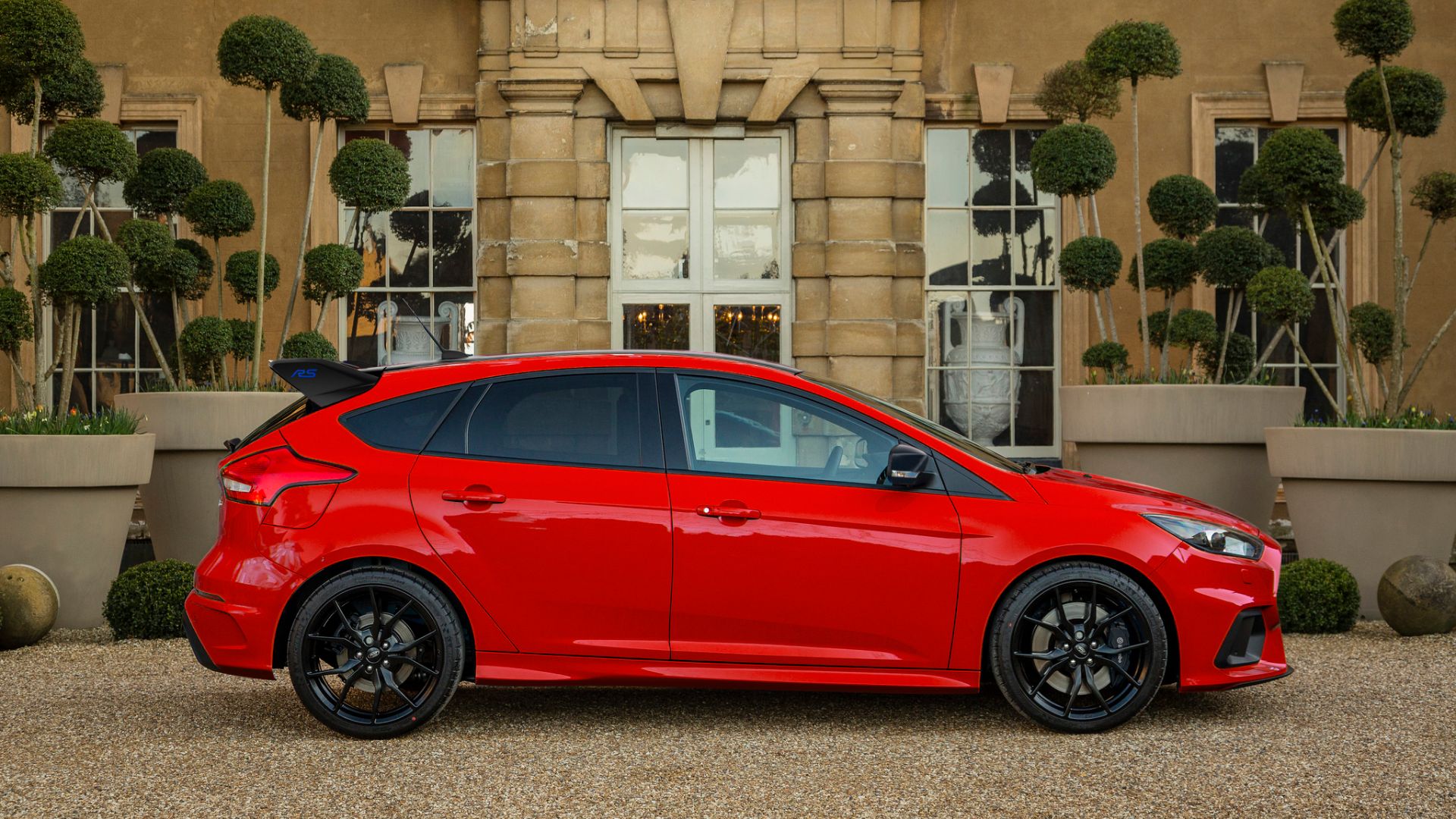
‘For driving enthusiasts’
© FordLeo Roeks, director of Ford Performance at the time, said: “For driving enthusiasts, the additional mechanical grip offered by the Quaife diff will make it even easier to carry speed through a corner on the track, and maximise acceleration on the way out. The new set-up also delivers greater mechanical stability and control when braking hard, and will help drivers set the car up for powerslides using Drift Mode”.
-

End of an era
© FordThe Mk3 bowed out with 50 Heritage Edition models for the UK market. Painted scorching Deep Orange and fitted with a 375-horsepower Mountune engine upgrade – along with the Red Edition’s Quaife diff – they cost an ambitious £39,895 when new.
-

The future was once orange
© FordToday, we’ve seen Heritage Editions advertised for twice that amount – partly a reflection, perhaps, of the fact there won’t be another Focus RS. At least, not yet. Let’s hope this much-loved hot hatch makes a comeback at some point.